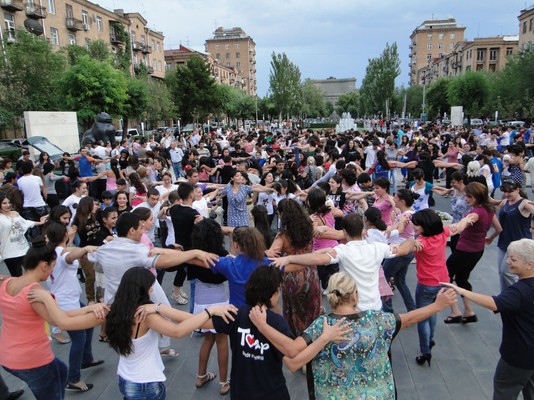Armenian national dances are an integral part of Armenian culture. The origin of dances dates back to the pagan times and is one of the great many ways to observe Armenian character. Due to the dances, one can see the mentality of the nation, the inner world and the attitude towards nature and life. After undergoing some changes through the centuries, national dances still retain their typical movements, musical and structural features.
When many families migrated to Eastern Armenia from Western Armenia in the early 20th century, hybridization of two different branches of national culture occurred creating new and richer variety of national dances. There are several kinds of dances according to the way of performance and handholding form. According to the content there are mythical, religious, secular, hunting, military and other types of dances.
